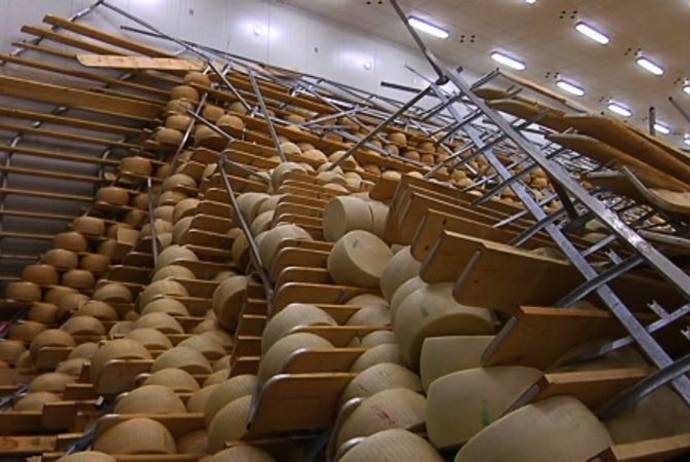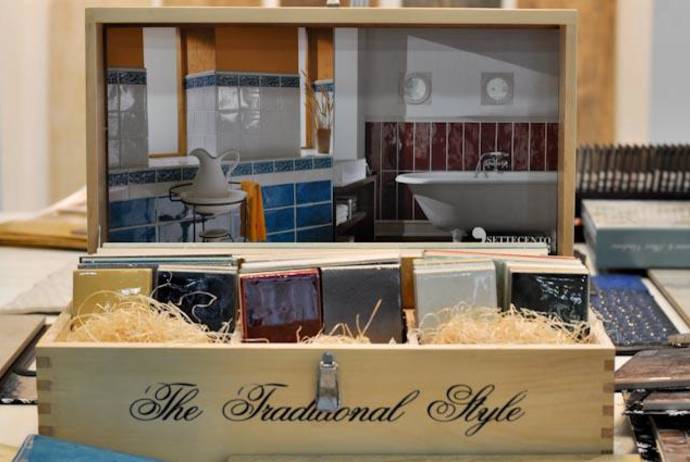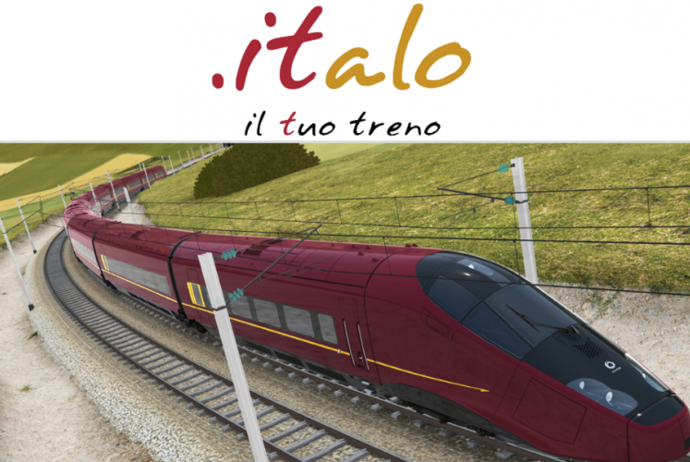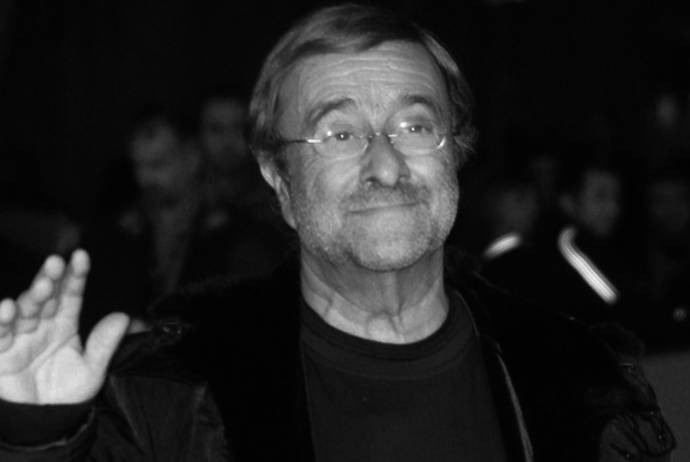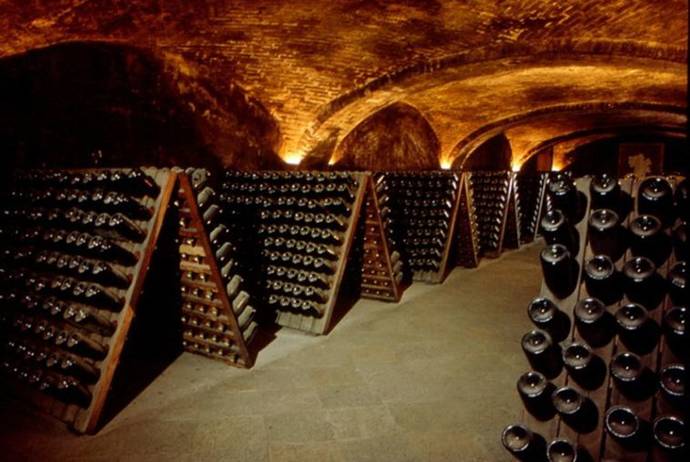“This year marks the fourth presence of Ceramics of Italy at ICFF (the International Contemporary Furniture Fair, North America’s premier showcase for contemporary design). The presence of Ceramics of Italy is sponsored by Confindustria Ceramica and the Italian Trade Commission.
The nine participating companies - Atlas Concorde, Ceramiche Refin, Cooperativa Ceramica d’Imola, Cotto d’Este, Fap Ceramiche, Mirage Granito Ceramico, Gruppo Vivaterra, Sant’Agostino, Settecento Mosaici and Ceramiche d'Arte - which already are important players in the American market, offer high quality products realized thanks to thorough technical research that results in innovative and creative final products.
There is a long series of elements that help the Italian products differentiate themselves from what other competitors have to offer,” Italian Trade Commissioner Aniello Musella said to those present at booth #1432, the multi-brand booth of Ceramics of Italy (the trademark for Italian manufacturers of ceramic tiles, sanitary-ware and tableware, that are members of Confindustria Ceramica) that showcased a range of decorative and hi-tech tiles from selected Italian companies, and information on the latest developments in the industry.
“The companies here at the show have a long and consolidated story in tile production. In a moment of crisis such as the one we are living today there is a sort of natural selection and the companies that continue to operate on the international market are the ones that are of medium/large size and have a long and solid production history. They have invested in innovating the production process and the products themselves as well as in marketing activities and participation in events and fairs,” he continued.
“April and May are two important months for the Italian tile industry. We are here at ICFF after having been in Orlando at Coverings, a major trade shows for tile, stone and flooring, and at HD (Hospitality and Design Exposition & Conference) in Las Vegas, the largest industry event of its kind. We are presenting here in the US the very best of Italian productions to different American targets: the trade, designers, and here, the end consumer.
The best of Italian tile signifies Made in Italy and everything it carries within itself: meaning values, tradition, innovation, style, quality, design but also respect for the environment and all the workers who produce a unique and highly technological product that adapts to any style from modern to classic, industrial and shabby,” Cristina Faedi, the representative from Confindustria Ceramica said.
The United States import 70% of tiles from all over the world and Italy plays a really major role in this. Data from 2011 show that out of a total of 1 billion and 100 million USD, Italy's slice is of 380 millions. “The real estate market is in a stagnant situation although there is no doubt that the Italian tile industry is doing really well especially in the renovation sector,” Mr. Musella added, “We are looking forward to seeing a growth in the market not only on a residential level but also commercial and institutional. This will push the Italian producers to put themselves on the market where, despite the crisis, Italy is in a position of leadership with a 35% slice of the market itself.”
Tile is a material that presents itself in different shapes and forms, it is adaptable to many different situations. It is easy to position, less heavy and easier to handle and long lasting. Now tiles look like marble, granite and even hardwood. There is a tile for any request.
Valerio Doga, of Mirage Granito Ceramico presented, for example, the Nolita collection characterized by a contemporary design that evokes the look of exposed raw concrete. It is very urban “very New York cool.” The Oxy collection, instead, presents a metallic look so that the tile is not a simple tile anymore but an essential furnishing element.
The qualities of tile are many and the Italian trade Commission provided a useful list of the ten most important ones.
Adaptable. Italian tile is a high quality industrial product that is suitable for a wide range of applications: from furniture & accessories to urban planning, outdoor or indoor, in the private sector as well in the public one. Thanks to its modular approach and amazing offering of shapes, colors anf finishes, tile lends itself to creative and personalized installations. At the same time, tile has minimal damage costs (it can be spot-repaired) and is often marketed in “families” of coordinated products – allowing for easy updates to an existing building/room.
Clean. Maintenance is simple. Often, warm water and neutral cleaners are the only cleaning products required. Additionally, tiles are inert and do not release any substance; therefore they do not increase the level of toxicity of cleaning products that, after use, are flushed into the ecosystem such as chemicals, and solvents. This easy maintenance contributes to consumer cost savings over the life of the installation. Ceramic tile is a hygienic product that is suitable to be used even in a sterile environment.
Cost-efficient. Tile can be installed in a building to function as a heat sink. When the sun hits the tile, it absorbs the thermal energy and exhausts it over time, thus acting like a natural heater are reducing heating costs.
Durable. A product's lifespan is an important factor to consider. Floor finishes such as carpet, sheet vinyl, and natural hardwood have an expected life cycle of six years, 10 years and 15 years respectively, while the expected life cycle of porcelain, ceramic and mosaic tile is 50 years (TCNA Study of Floor Covering Costs, 2006)
Energy-saving. Compared to other materials, porcelain tile offers excellent performance for under-floor heating systems because it allows the whole system to function effectively with a lower water temperature, thus saving energy throughout the system. Additionally, Italian manufacturers produce ceramic products suitable for ventilated wall facades. Large format tiles are one of the best options for this cladding system as they are mechanically strong and physically resilient to most of the hardships that deteriorate exterior walls.
Non-toxic. Ceramic tiles contain no VOCs (Volatile Organic Compounds) that release gas prior to, during, or after installation. Products that meet stringent VOC restrictions contribute to LEED (Leadership in Energy and Environmental Design) credits for project. In addition, tiles will not absorb odors from smoke, paint, fumes or other contaminants, enhancing indoor air quality.
Recyclable. Italian tile is an inert material manufactured from natural raw materials and will break down naturally at the end of its life cycle. Additionally, it is a recyclable product through the reuse of the material in the manufacturing process (minimizing natural resource use and waste).
Recycled. A growing number of Italian tiles contain a percentage of pre- and post-consumer recycled content, which can contribute points toward USGBC-LEED certification.
Resistant. Tile is resistant to extreme weather condition, chemicals' impact, water, moisture, temperature change and UV rays; giving ceramics the edge in hard environmental stress situations. It is also fire-resistant and does not create additional combustion material (in fact, t may help reduce the spread of fire) nor does it contribute to the toxic fumes and smoke when a fire occurs.
Responsible. Italian ceramic tile manufacturers are organized in industrial districts and are directly involved in the responsible management of their territory. They have direct control on the environmental and social impact of their manufacturing operations (air, water, waste, corporate social responsibility, etc.) and on the local trade of their products.
---
Ceramics of Italy is the trademark for Italian manufacturers of ceramic tiles, sanitary-ware and tableware, that are members of Confindustria Ceramica. For more information on the ceramic tile sector, visit www.italiantilen.com.
For instant updates on Ceramics of Italy follow the industry at:
www.facebook.com/CeramicTilesOfItaly or http://twitter.com/tilesofitaly.






























